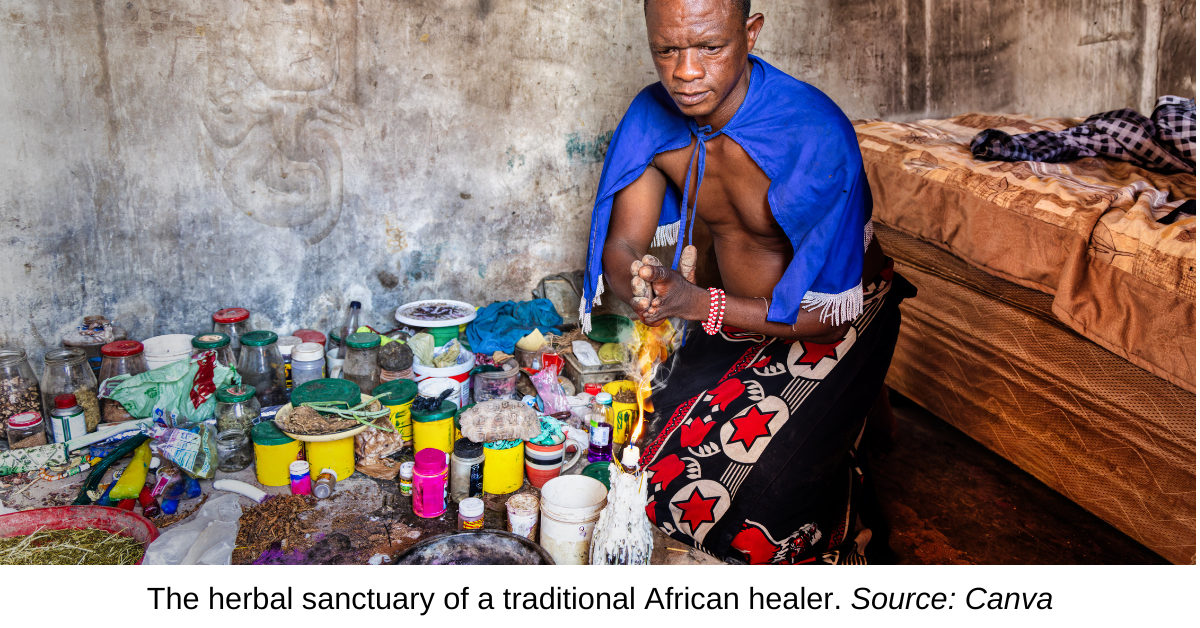Africa is a continent of wonders, stories, animals, and, best of all, amazing plants. Before hospitals and pharmacies existed, Africans relied on nature to treat a range of ailments. Leaves, roots, bark—each told a tale. And these secrets aren’t just for the grown-ups. Children, too, have taken a leaf out of their elders’ book regarding the potency of African healing plants. So, let’s discover some of these magical leaves and roots and find the nature wisdom in the African herbal facts.
Nature Knows Best
In many African communities, herbal cures are taken for tummy aches, coughs, fevers, and even to help babies grow strong. Before you went to a clinic, you went to Grandma. Grandma Was the First Doctor. She knew that guava leaves helped with stomachaches. She knew how to crush bitter leaf for high blood pressure. She didn’t go to school for it. She watched. She listened. This is what we call traditional African medicine—passed down from grandparents to parents, and now to you. African healers have a deep understanding of medicinal plants that have been used for many generations. This information contains age-old wisdom about using natural remedies to treat everything from skin infections to digestive problems.

A Few Secrets About Magical Plants
Many families continue to use traditional African medicine for minor illnesses despite the availability of modern medicine. In order to understand how these plants function and develop new medications for everyone, scientists are currently researching them. However, pollution and deforestation have put some of these plants in danger. You can contribute to the future preservation of these enchanted plants by becoming knowledgeable about African herbal facts. Here are a few medicinal plants:
• Arrowroot: Grown in East Africa, arrowroot is gentle on little tummies. It is often given to kids who have stomachaches or who require an easy-to-digest food. This nutrient-dense plant also helps calm irritated stomachs.
• Neem Tree: Popularly known as Dogonyaro in Nigeria. Even though it tastes bitter, it effectively combats malaria. Some chew the leaves. Others boil them into tea.
• Aloe vera: soft and jelly-like inside. Got a cut or sunburn? Rub it on. No stinging. Just cool magic.
• Baobab tree: Not just a giant tree with thick arms—it’s a snack and a vitamin store in one. The powder from its fruit is sweet and full of Vitamin C.
• Wild mint: Also called "fever tea," the leaves of this plant are brewed to make a delicious tea that relieves fever and colds. It grows along the banks of rivers and has a fresh scent. Many families use it to treat sniffles and coughs.
• Marula Tree: In addition to being an elephant's favourite snack, the fruit of the marula tree is a great source of vitamin C for children. It is a natural treatment for bumps and scratches because the oil from its seeds promotes skin healing and lessens scarring.
• Rooibos: Rooibos leaves are used to make South Africa's well-known red tea. Children consume it because of its sweet flavour and because it relieves stomach issues and allergies. Additionally, Rooibos is rich in antioxidants, which support the body's resilience.
• African Ginger: This spicy root is used to chase away colds and fevers. Parents sometimes make a warm drink from African ginger to help kids feel better during flu season.
• African Wormwood: With its strong smell, this plant is used to treat coughs, colds, and even malaria. A little goes a long way, and it’s a powerful part of traditional African medicine.

How Do Children Discover These Plants?
Children are taught early on that certain plants are more than just green things in many African villages. Additionally, children in Africa typically learn about nature outdoors, in the shade of trees and the sun. Many children are taught by elders where to find the appropriate plants, how to prepare them, and when to use them. As part of cultural plant knowledge, this experiential learning helps kids appreciate nature and recognize the worth of each leaf and root.
Are you familiar with any of these medicinal plants? Maybe your family has its own nature secrets! Share your story in the comments.





